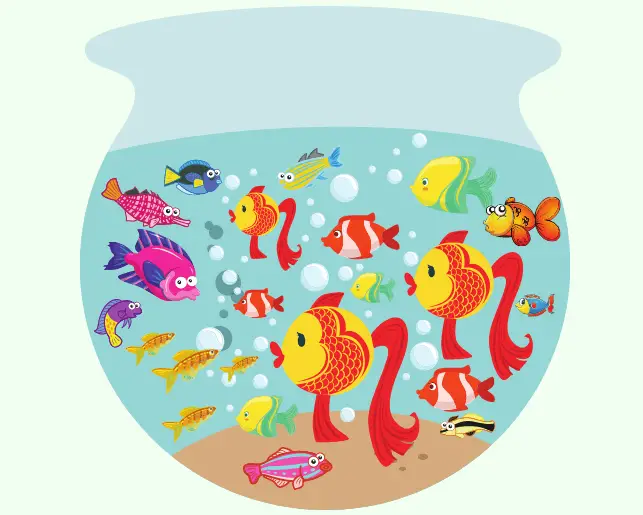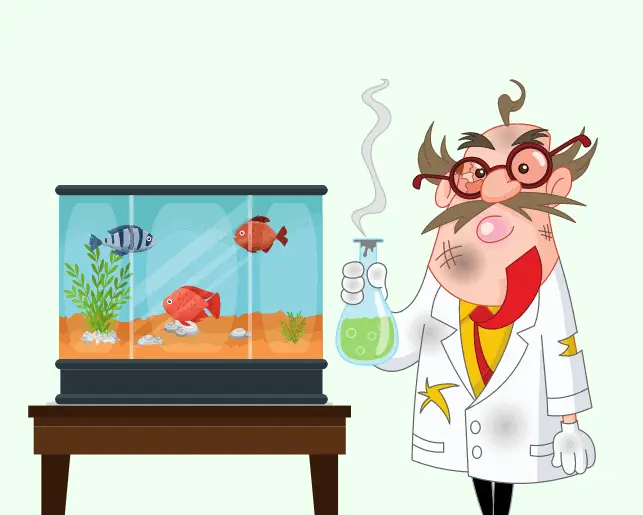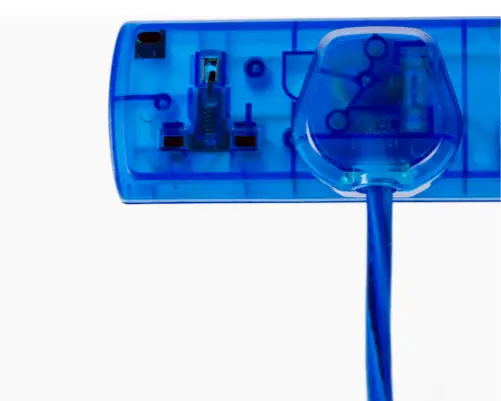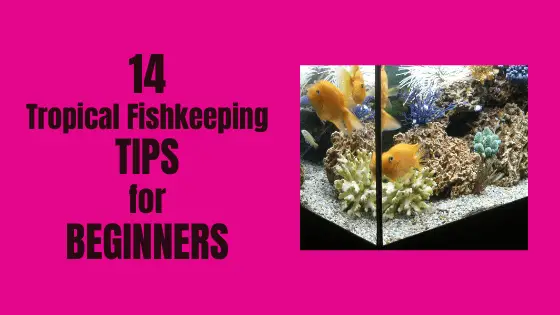Tropical fishkeeping is a great hobby, but it can also be very challenging.
If you are just starting out in the world of tropical fishkeeping, there are some things that will make your life easier and help ensure that you have success with your new hobby.
Here are the 14 best tropical fishkeeping tips for beginners!
1-Do your research!
This is a great place to start. Research the type of fish you want, learn about their requirements and what they will eat. This research will make your aquarium maintenance much easier in the long run!
If you are new to the hobby of tropical fishkeeping, then you may want to consider a freshwater aquarium. Saltwater aquariums are harder to set up and maintain, although many people do try and start with a saltwater aquarium due to the amazingly beautiful array of Marine Fish!
Tropical fishkeeping can be a tough hobby to get started in, but with some research and preparation it can be successful. Do your research before you start the process of getting fish for an aquarium!
2-Be patient with your water conditions.
Fishkeeping is a long-term commitment, and the water conditions will tell you if your tank has cycled properly or not. While some people like to add fish immediately after setting up their tanks, it’s important that you wait until the tank cycles before adding any fish. This can take anywhere from two weeks to three months, so be patient.
There are different ways to cycle your tank before adding any fish. I always use the Ammonia Method, which is testing the water every day and adding ammonia into the water.
Now, this may sound a bit odd, as ammonia is the last thing you want in your tank.
By adding the ammonia now to an unoccupied tank, you will force the nitrogen cycle to start. The ammonia will turn into nitrites (bad) which will then turn into nitrates (not as bad).
3-Don’t overstock your tank.

Lots of people when starting out will overstock their tanks with fish and plants which leads to a lot of unnecessary stress on the tank. Overstocking your tank can lead to stress for both you and your fish! Remember that if you want vibrant, healthy tropical fish keeping then less is more.
Don’t be afraid to give your fish some space. It’s a good idea to have about one inch of free swimming space per two inches in length for any fish you wish to keep, so if they are six inches long then their tank should be at least 12-inches deep. If you want lots of plants and hiding spaces for your fish, then again less is more.
If the tank has a filter or other submerged equipment that can’t be removed, then make sure to offer plenty of hiding spaces like plants and/or caves for your critters to feel safe in all times of day as overcrowding tanks will lead to territorial disputes between inhabitants.
4-Use liquid testing kits.
Liquid testing kits are a great way to stay on top of the water chemistry while you wait for your tank to cycle. Most liquid test kits will include ammonia, nitrites and nitrates in their readings as well as any other vital information about how your tank is doing.
This is the liquid testing kit I use. It is very easy to do, and there is a lot of information on their website which I found really helpful. It has a little set up in the box so you can stand your test tubes up which is a really good idea.
Every few days or so it’s a good idea to take a water sample and test it for the aforementioned levels in order to help you keep track of how your tank is cycling. The kits are also a good way to see if any other problems might be occurring, such as algae growth or pH issues which can lead to further complications down the line.
It’s important that once you’ve taken a reading you write it down in a notebook or journal so you can go back and compare any changes that might happen over time.
You can get strip testing kits as well but these are notoriously unreliable.
Some local aquariums will test the water for you if you take a sample to them.
5-Make sure you have the correct equipment.
If you’re just getting started with tropical fishkeeping, then it’s important to make sure that you have everything you need. This includes the tank itself and any gadgets like filters or lighting which will be used inside. If there are scratches on anything or if something isn’t working properly anymore, replace it as soon as possible before it can cause any more damage to your tank and its inhabitants.
A good way to do this is by making a list of all the things you need before heading to the shop (such as filters, plants, food) so that you’re not forgetting anything important.
There are lots of little things that aren’t essential, but you will be glad you got them. I have a litre jug which I use all the time for various things.
I also have a supply of small towels next to my fish tank. The first time I had to put my arm into the tank, I hadn’t considered the fact that my arm would then be soaking wet when taking it back out of the tank!
I also bought a nail brush for when I am cleaning my ornaments. It helps to get rid of any stubborn algae.
6-Don’t overfeed your fish.

One of the main mistakes that people make when it comes to fishkeeping is overfeeding your pets.
Some people think it is ok to feed them their normal food, and then add a load of treats in as well!
Fish can’t vomit like humans do so if they eat too much then there’s no way for them to get rid of any extra food and this will lead to a number of other problems for you to deal with in the future.
You also have some species of fish that don’t know when to say no and can end up really bloated after eating far too much.
Don’t forget about your plants either! One of the most common reasons tropical fish mums and dads have problems is because they don’t take care of their plants.
7-Have your fish tank in an easy to reach area.
The more you can do to make your tank easy for you and others in the household, the better. This includes putting it somewhere where everyone has access without having to squeeze past furniture or other obstacles.
One thing some beginners don’t think about in advance is just how often they need to have easy access to their tank.
You don’t want to have to train to be a contortionist so you can get your arm around to the back of the tank, or have to balance buckets on the dog’s head when carrying out a water change, so think before you decide on where your tank will live.
This article will help you with the best place to put your fish tank.
8-Don’t trust the people selling the fish.
I have learnt from experience that some fish sales people are not nice people at all!
When my first tank as an adult on my own was cycled, I went to my local aquarium feeling very well prepared with my tank dimensions, litre capacity and my water parameter log.
The salesman told me which fish went with which (I already had an idea from conducting my own research), and sent me on my merry way with 10 Neon Tetras, 8 Guppies, 2 Mollies and 5 Gouramis.
Unknown to me, that was far too many fish for my size tank, so they started to die. 4 of my Guppies only lasted a week, as did 4 of my Tetras.
I found a fish stocking calculator online, which is the best thing ever, and it informed me I was 178% overstocked!
I was horrified and felt like a cruel fish mum for doing this. I soon learned though that this is a common occurrence unfortunately.
My advice would be to use the fish stocking calculator as your only reference to stocking your tank and you should be fine.
9-Keep a maintenance schedule.
No matter what type of tank you have, it’s important to keep a maintenance schedule.
I promise it will make your life a lot easier, and will also cut down on how much time you will spend on maintenance.
It is also a good reference point to see if something has changed, even slightly. This will help you intercept any potential problems before they get out of hand.
There are some tasks you need to do daily, such as taking a fishy register. I ask my son to do a head count each morning as it drives me mad when the little buggers don’t stay still for me. He has much more patience than I do.
There are other tasks that should be done weekly. I always check my water parameters each week, clean the outside of my tank etc.
Every other week I will carry out a partial water change, clean the ornaments, vacuum the gravel etc.
10-Join aquarium Facebook groups.
This is a good place to ask questions and learn from others in the field. There are also plenty of resources such as online forums for help with anything that you might be struggling with.
Tread very carefully though. Some of the Facebook groups are horrendously judgemental!
My advice is to join a few and have a good look around to find the one that seems the most supportive to beginners, then delete the others.
There are also a lot of other resources available online such as forums which will help with anything you may find difficult about fishkeeping.
11-Learn the science.

Keeping tropical fish is not as simple as buying a tank, filling it with water, adding a nice plant and a bridge, and then plopping a load of fish in.
Some people do do this, but their hobby lasts about 4 days.
There is a lot of science regarding the water chemistry and the plants that go into a tank, so take time to read up on these before you start your own.
The more knowledge you have going in, then the less likely it will be for things to get out of hand later down the line and make this hobby something which becomes difficult rather than enjoyable!
12-Research which fish can live with each other peacefully.
It’s important that you know which fish can live together in the same tank without fighting or harming each other. For instance, if there are catfish and cichlids living in a tank they will both be competing for food so it might not work out too well.
Luckily, many tropical fishkeeping blogs (like mine) have this information already provided for you, so it’s worth checking these out before making any purchases to avoid problems down the line!
13-Make sure you have enough sockets.

You need quite a few sockets when setting up a fish tank. The filter, water heater, lights etc all need sockets of their own so make sure you have enough before starting your project.
You can get a short extension lead that has 4 or 6 sockets in which will make things easier for you.
Make sure that your socket is not directly behind your tank. This will make it much harder to reach, and there is the small issue of electricity and water not being the best combination.
14-Put a towel behind your fish tank.
I found this out myself when cycling my tank.
Every time I opened the lid, condensation would trickle down the back of the tank, onto the floor.
I have since placed a towel on the floor to catch the drips and this has been a great help.
Conclusion.
I hope you have found these tips helpful.
The most important advice for beginners to the world of tropical fish is to have bucket loads of patience. Fishkeeping can take a lot of work and it’s not always easy, but with the right amount of research and hard work you’ll find that these little guys are worth every minute spent on them!
It might seem like there are a lot of things which need remembering at first, but once you get the hang of it then these will soon become second nature.
Related Posts:
Things you should NEVER put in your fish tank.



